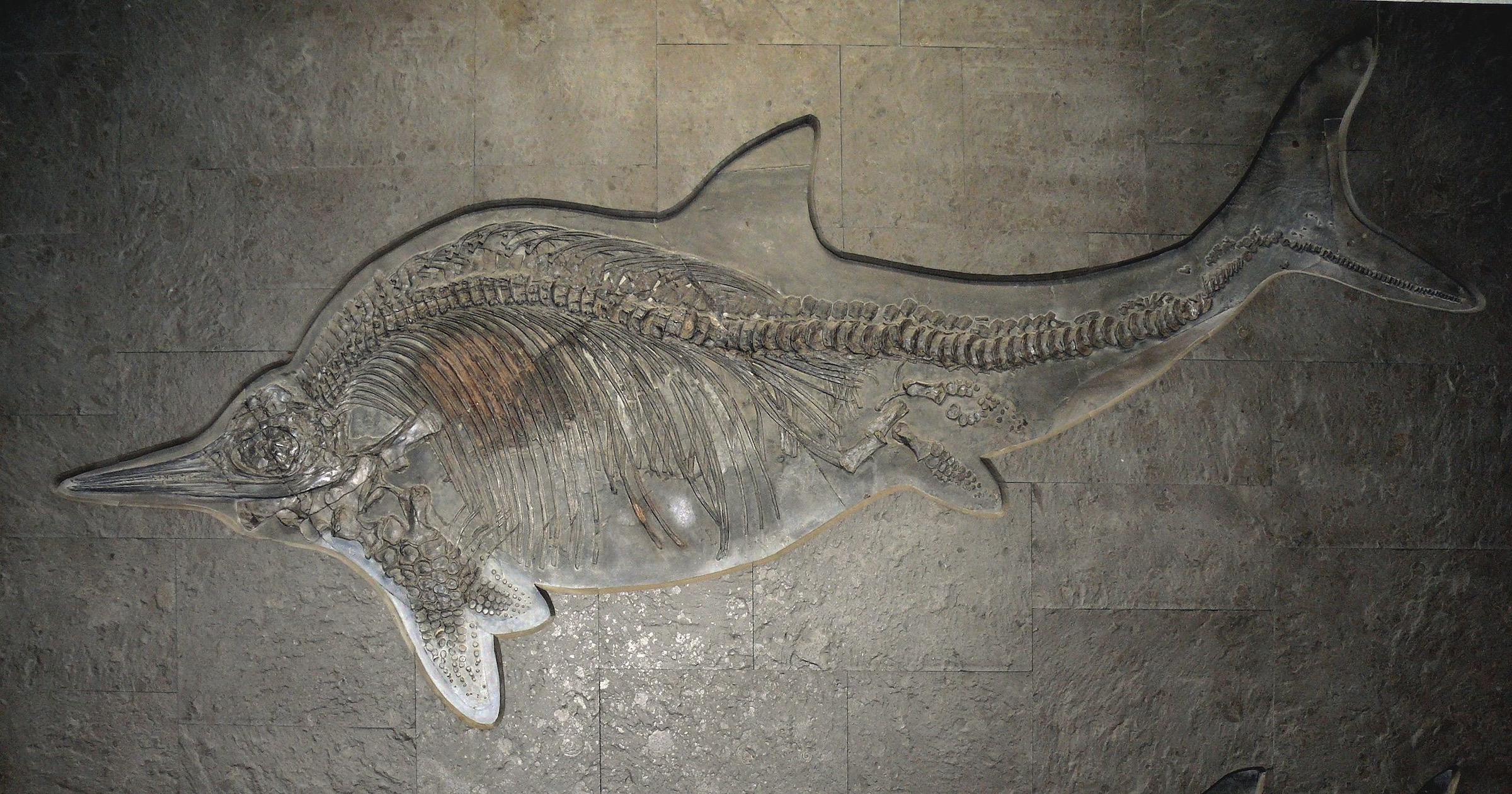 Evolution
Evolution
 Paleontology
Paleontology
New Scientist: Ichthyosaurs Evolved “Astonishingly Rapidly”

In December, Günter Bechly commented on the non-neo-Darwinian origins of ichthyosaurs (large marine reptiles that lived in the Mesozoic), writing:
A new study that described Sclerocormus as the sister genus to Cartorhynchus found “that ichthyosauriforms evolved rapidly within the first one million years of their evolution” (Jiang et al. 2016). This means that the fish-like habitus of ichthyosaurs originated from terrestrial quadrupedal ancestors within a quarter of the lifespan of a single large vertebrate species. Not exactly gradual in my view! Indeed, a friend of mine, who is one of the leading experts on ichthyosaurs and not a theist, privately and confidentially told me that he came to doubt neo-Darwinism as an adequate explanation for this very reason.
“A Real Whopper”
Now, an article in New Scientist has confirmed these problems, with a story titled “Largest ever animal may have been Triassic ichthyosaur super-predator.” According to the subhead, “New fossil discoveries show predatory marine reptiles from 200 million years ago may have been bigger than today’s blue whales — and that they evolved astonishingly rapidly.”
Then, in 2021, Sander and his colleagues reported a real whopper. They described a 2-metre-long ichthyosaur skull, plus some other bones, found at a site called Fossil Hill in Nevada. The animal, which they named Cymbospondylus youngorum, was probably 17.5 metres long. It lived 246 million years ago, a mere 6 million years after the Permian-Triassic extinction, and only 2 million years after the proto-ichthyosaurs. The implication was clear: once they had taken to the water, some ichthyosaurs got very big, very fast.
At first glance this appears to be a shockingly fast pulse of evolution. For comparison, the whales seem to have taken tens of millions of years to evolve from land-dwelling animals to ocean giants.
Other sources have affirmed the rapid evolution of ichthyosaurs. A 2021 paper in Science cited “rapid evolution of body size in ichthyosaurs” and “fast increases in disparity measures in early ichthyosaurs” which “reflect rapid lineage diversification and dietary specialization.”
Of course, the claim above about whales taking “tens of millions of years to evolve” is not correct, as fully aquatic whales also are said to have evolved incredibly rapidly from land mammals in perhaps just a few million years, not “tens of millions.” An article at Phys.org also published last year stated:
Dr. Coombs comments “Within eight million years, the ancestors of whales go from being fully terrestrial, such as the four-legged, furry Pakicetus which lived around the edge of the Tethys Sea, to fully aquatic.
“This is super quick in evolutionary terms.”
That article was covering a 2022 paper in Current Biology, “The tempo of cetacean cranial evolution,” which found that “Cetacean diversity was obtained through three key periods of rapid evolution” where the “Highest evolutionary rates are seen during the initial evolution of stem whales” — the period mentioned above — and “fossils demonstrate rapid transitions into novel morphospace.” The paper continues:
The evolution of cetaceans (whales, dolphins, and porpoises) involves one of the most extreme transitions of any vertebrate lineage. This shift occurred over an evolutionarily short 8–12 million years and is captured by an exceptional fossil record beginning in the early Eocene (~53 Ma) that documents the reorganization of the cetacean body into that of a fully aquatic organism. Some of the most extreme anatomical changes in this transition occurred in the skull, allowing whales to feed, breathe, and navigate in their new aquatic environments
New Niches, Open for Business
In any case, the New Scientist article goes on to propose that the giant ichthyosaurs’ rapid evolution is because niches opened up after the Permian-Triassic extinction that allowed them to evolve rapidly:
But given that the ichthyosaurs were living immediately after a period of profound ecological upheaval, perhaps we shouldn’t be too shocked. “I suspect one of the key reasons for [their rapid evolution into giants] is simply because nobody else was doing that,” says Lomax. It may be that such a rapid shift was possible because the Permian-Triassic mass extinction reduced diversity in the oceans, creating an opportunity for gigantic animals to evolve, which the ichthyosaurs seized.
This concept that adaptive radiations occur after mass extinction when niches are empty and available to be filled is an old idea. A 2022 paper in Frontiers in Earth Science invoked or hinted at adaptive radiation to explain the rapid appearance of diversity in various vertebrate groups after the Permian-Triassic Mass Extinction:
Among vertebrates in particular, the nature of their [post-extinction] recovery also seems to mark something unusual. Certain clades such as fishes and tetrapods showed very rapid diversifications in the sea. … Marine predatory vertebrates show spectacular and rapid diversifications in the Early and Middle Triassic, and new discoveries from China have confirmed their early start in the Triassic, but not in the Late Permian. … The recent analysis of a giant ichthyosaur, Cymbospondylus youngorum, from the Anisian-aged Fossil Hill Member of the Favret Formation in Nevada, gives impressive evidence of the rapid diversification of these marine reptiles. This animal is estimated as 17.6 m long and weighing 45 tons, and the authors carry out detailed macroevolutionary analysis which shows enormously rapid achievement of huge diversity and great body size by ichthyosaurs in the Olenekian and Anisian, a prime example of an ‘early burst’ radiation.
But this explanation lacks mechanisms and never explores how biological information can arise so quickly. The raw data remains in direct conflict with Darwinian gradualism — meaning this is a case of evolutionary biology trying to explain away the data that otherwise was not directly expected under their model.
